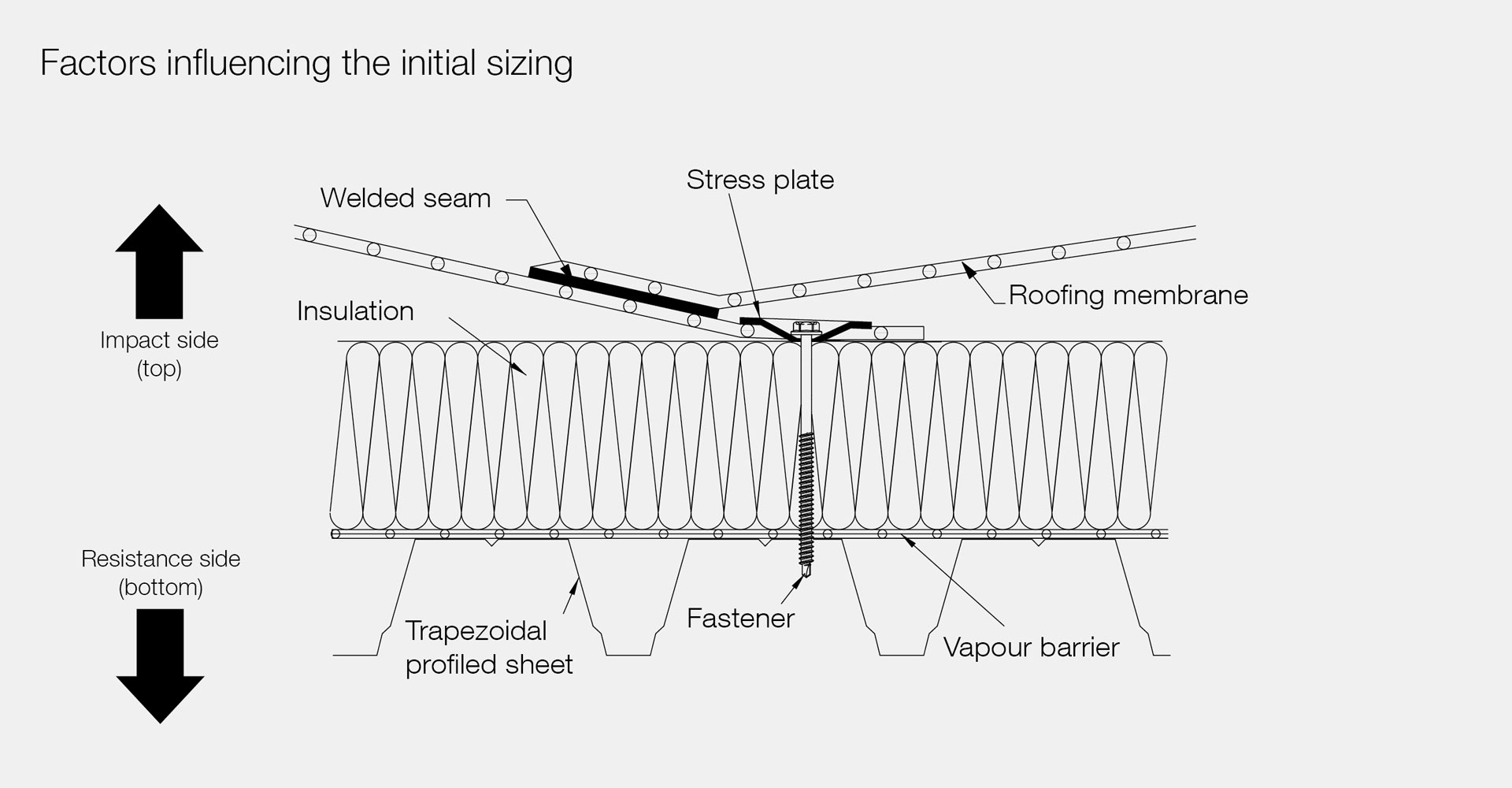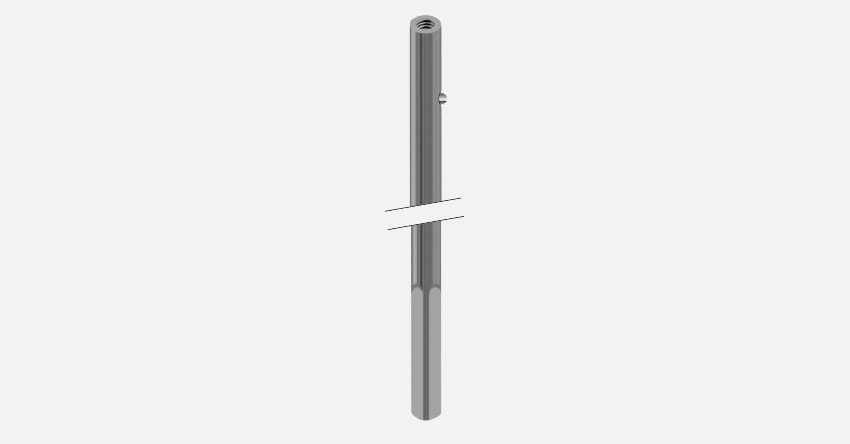Basic concepts of initial sizing
Flat roof Guidebook – Part 3
The previous parts of our flat roof guide already talked about the basic concepts of planning a flat roof, described the difference between flat and pitched roofs, looked at the structure of a flat roof in more detail and explained which loads and stresses have to be taken into account and which types of securing can be considered. This issue talks about initial sizing.
An initial sizing is the basis for determining the necessary number of flat roof attachment elements. But which influencing factors play a role in the quantitative analysis, and which parameters are required to create the initial sizing?
An initial sizing is the basis for determining the necessary number of flat roof attachment elements. But which influencing factors play a role in the quantitative analysis, and which parameters are required to create the initial sizing?
Influencing factors for initial sizing
With regards to the effects, three factors have an influence on the calculation: The wind zone in which the building project is planned. Here the geographic location of the building plays a role. Germany, for example, is split into four wind zones. Four terrain categories are defined in terrain roughness. The building geometry with the following parameters – floor plan calculation, building height, roof slope and attack training – also has to be considered.With regards to resistance, there are four factors which have an influence on the calculation: Firstly, the supporting structure used for the attachment plays a role.
The selected fastening combination, consisting of stress plate and screw, also has to be defined. Information about the roofing membrane used such as the manufacturer, lengths, description and material strength are also necessary for the optimal initial sizing.
Finally, it is also beneficial if the combination of lengths and fastening elements has already been tested in a wind uplift test, and a design load can be used from the corresponding test report. The performance of an initial sizing without the results of a wind uplift test for the selected combination is possible, although it does not generate optimal results. When the initial sizing is performed, first the load influences are evaluated and the selected fastening combination is established. In addition, national specifications such as the minimum number of fasteners per square meter have to be considered. In Germany, the minimum number of fasteners per square metre is two, according to the latest version of the Flat Roof Directive.
The selected fastening combination, consisting of stress plate and screw, also has to be defined. Information about the roofing membrane used such as the manufacturer, lengths, description and material strength are also necessary for the optimal initial sizing.
Finally, it is also beneficial if the combination of lengths and fastening elements has already been tested in a wind uplift test, and a design load can be used from the corresponding test report. The performance of an initial sizing without the results of a wind uplift test for the selected combination is possible, although it does not generate optimal results. When the initial sizing is performed, first the load influences are evaluated and the selected fastening combination is established. In addition, national specifications such as the minimum number of fasteners per square meter have to be considered. In Germany, the minimum number of fasteners per square metre is two, according to the latest version of the Flat Roof Directive.
Objective of an initial sizing
The objective of an initial sizing is to give the customer a calculation, where the combination of the roofing membrane and the fastening combination has been taken into account. It comprises different surfaces, consisting of the corner area, the outer surface, inner surface and the inner area. The initial sizing provides an indication of the necessary number of fastening elements per area, and defines the distances.As already mentioned, the results of a wind uplift test can be used as valuable information in the initial sizing. In the next part of our guide, we will discuss what this means and how it is carried out. We will also explain the wind load calculation according to DIN EN 1991-1-4.



